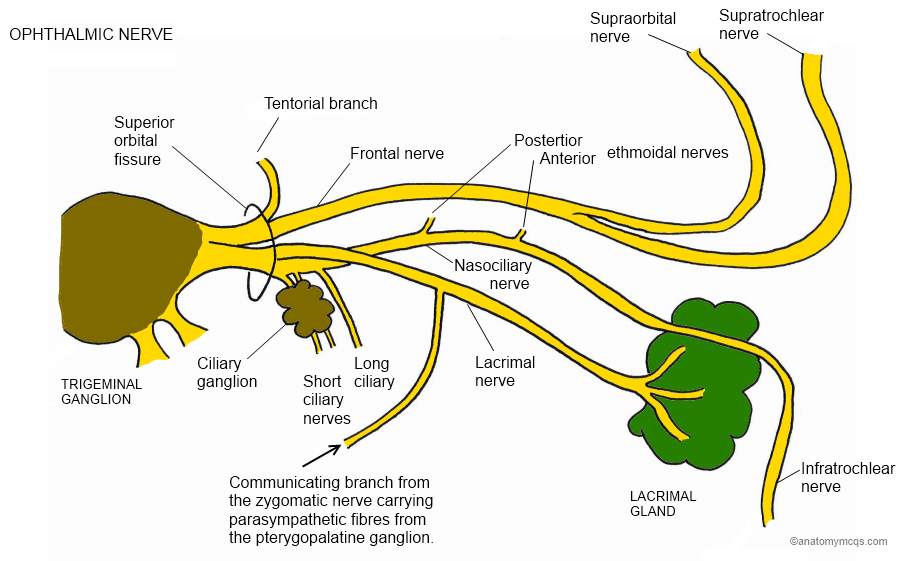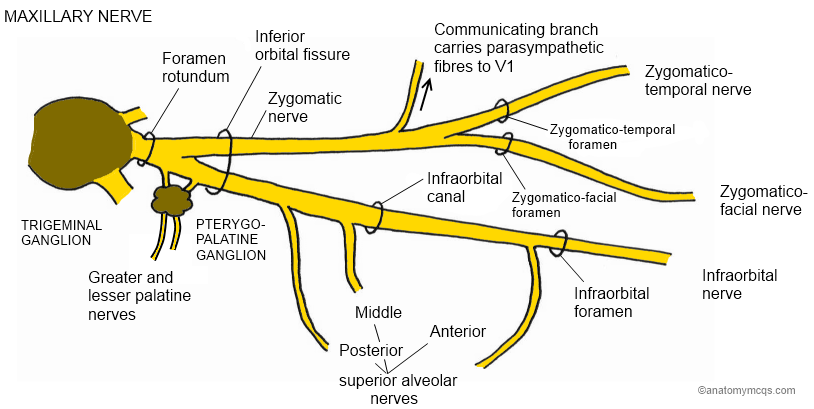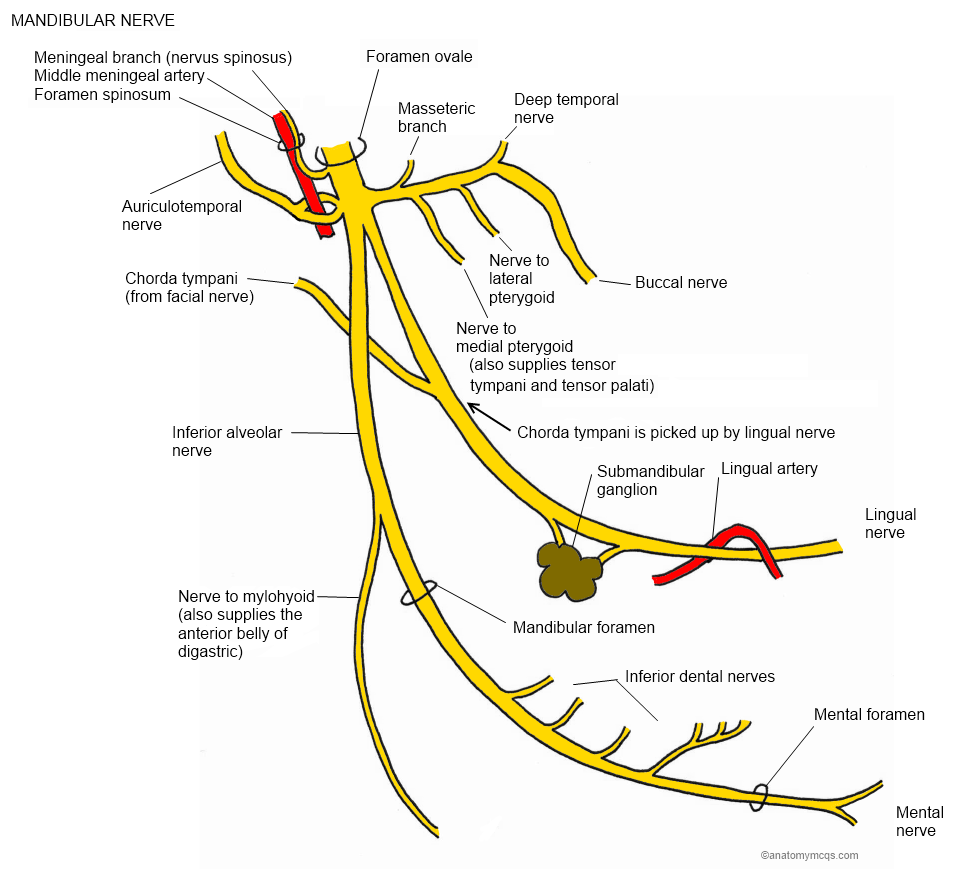Question #372
Considering the trigeminal nerve, which of the following statements is correct?
The trigeminal nerve has a large sensory portion and a smaller branchial motor portion. It passes through Meckel’s cave where it forms the large trigeminal ganglion. From here it divides into its three main branches:
V1 (ophthalmic): the smallest division, passes through the cavernous sinus, then the supra-orbital fissure before dividing into its terminal branches. The nasociliary nerve (short ciliary branches) carry post-ganglionic parasympathetic fibres from the ciliary ganglion to the dilator papillae and ciliary muscles.

V2 (maxillary): takes a short course through the cavernous sinus before descending through the foramen rotundum to enter the pterygopalatine fossa. Here it picks up post-ganglionic parasympathetic fibres (pre-ganglionic fibres carried by the greater petrosal nerve, a branch of the facial nerve) and divides into the zygomatic and infra-orbital branches before passing through the infra-orbital fissure. The parasympathetic fibres pass to the lacrimal gland.

V3 (mandibular): carries the branchial motor fibres which innervate the muscles of mastication. Descends through the foramen ovale into the infratemporal fossa where it picks up post-ganglionic parasympathetic fibres from the submandibular ganglion (pre-ganglionic fibres carried on the chorda tympani) and the otic ganglion (pre-ganglionic fibres carried on the lesser petrosal nerve, a branch of the glossopharyngeal nerve).
